|
Author: Chet Heath, IBM Corporation, Boca Raton, Florida
Source: Personal Systems, 1991 Issue 2 (pages 23-30 physical)
This description of a concept called "workgroup computing" is reprinted from
the recently published book
The
Micro Channel Architecture Handbook by Chet Heath and Winn L. Rosch.
Information about the book follows the article (together with some other
contextual snippets from the editor).
A Busmaster Example
About The Author
Editor's Note
OmniCluster
A Busmaster Example
Not unlike the manner in which television allowed thought to be transmitted
and converted rapidly into popular understanding as entertainment, a new medium
has invaded the workplace - this time to efficiently allow us to coordinate our
effort and direction when groups work toward common goals. Not insidiously, but
silently, we absorbed the new philosophy by an evolutionary adaptation of our
daily work habits. This "Trojan horse" of technology is the workgroup system.
Its soldiers are made of software and silicon, and more than ever, they will
free men to think rather than work.
When personal computers were first accepted in the workplace, they were
perceived and promoted as individual tools (sometimes toys) of productivity.
They followed "dumb" terminals that were dependent upon the vitality of distant
resources, by providing the individual means required to accomplish routine
desktop drudgery fully under the control, and sight, of the user. Beyond that,
they did not imply large investment and could be justified by the improved
productivity of the individual working alone. Simple individual tasks, such as
composition of a letter, filing, or income tax preparation, justified the
systems in the workplace and occasionally in the home. Perhaps most of all, the
ability to reduce complex, numerically based decisions by way of the
spreadsheet program cemented the PC into the workplace.
The isolated desktop could be made to exchange information within a group or
office by physically exchanging the storage medium, the diskette. The
inexpensive incorporation of the hard disk, with an initial capacity of 30
diskettes, led to local manipulation of information larger than the capacity of
a single diskette. Further, the desire to control information located in the
distant systems and to interact with that data led to a need to communicate in
real time. The first connection was to the very same distant resources from
which the desktop had earlier declared independence. But then, more slowly, it
spread between the desktops, as workers became more dependent upon the output
of their peers than on the distant resource.
The workers needed to network locally, much as medieval knights had in
"round tables" centuries before them, or, as in more recent times, workers had
convened around the water cooler. The success of the local area network, or LAN
connectivity, between the electronic desktop systems is, therefore, a strong
statement about the need of the modem knights of the desktop to band together
to achieve common goals.
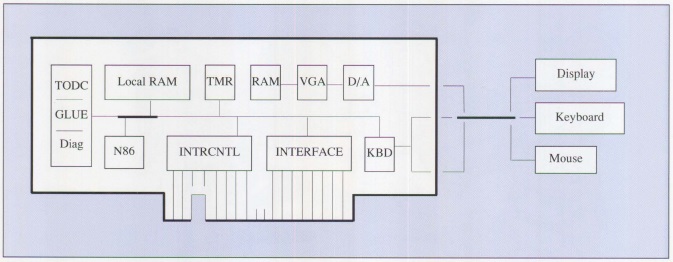
Figure 1. The GUESS Card
Why, if humans tend to herd together, are not personal systems initially
designed as integrated workgroup systems rather than standalone boxes? It is
because, like many inventions before it, the personal computer had to develop
an individual following before it could be integrated into society. Airplanes
preceded airports and airlines, electric lights glowed from batteries before
power stations were established, and Bell spoke one-on-one with Watson long
before the switchboard came along. Of course today air travel, electric light,
and the telephone are integrated into vast standardized networks, and the
design of the instrument at the user interface assumes that.
Until now, no personal system had been designed specifically to allow the
desktops to collectively assemble into one force. The connectivity that allows
users to congregate in a common network has so far been added as an
"afterthought" peripheral attachment to stand-alone designs. The attachment was
either through a bus-attached card, or similar logic on a system board, or
outboard of the system entirely, through a peripheral port. It is now time for
the personal system to integrate the interconnectivity of the network into its
basic design. PS/2 systems with Micro Channel architecture have done exactly
that.
When Micro Channel personal systems were first announced, it was stated that
much of the new concept was very subtle in nature. One component, peer-to-peer
bus master communication, was an element of that subtlety. Ironically,
peer-to-peer implies interaction between individuals, like Bell and Watson, yet
it is the building block of intercommunication.
Consider the following design concept, first publicly shown by IBM at the
Computer Dealers Exposition (COMDEX) in Las Vegas, in the fall of 1989. It is
not a product, but it could be, and it depends heavily on the foundation laid
in place within PS/2 systems that implement standardized Micro Channel
interfaces. It should not be inferred that IBM has any plans to market such a
system; it is shown here merely as the author's example of the flexibility of
Micro Channel architecture.
During the initial definition of the Micro Channel interface, the author had
envisioned six conceptual tests of the extendability of the personal system. In
one, the basic computer and its associated subsystem support components (such
as interrupt controller, time-of-day clock, and system timer) would be
assembled along with sufficient memory to contain an operating system and
applications on a single card (Figure 1). Also resident on the card is the
basic user interface of keyboard, mouse, VGA (or better) display, and
compatible diagnostic ports, to make the "system on a card" serviceable.
The basic user interface is available from standard connectors on the rear
bracket to the existing VGA, keyboard and pointing devices. It has been shown
elsewhere that these interfaces can be propagated hundreds of feet.
As a bus master, this card could form the compatible heart of a system,
requiring only the addition of disk, diskette, connectivity and printer
interface on a system "Combo" board with power supply and cabinet for
completion as in Figure 2.
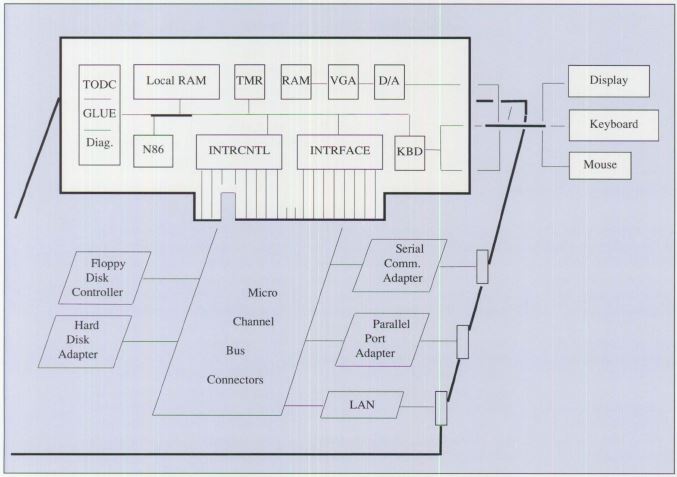
Figure 2. A Small "Entry" System Based on a GUESS Card
This, in itself, is an exciting concept, but only begins the possibilities
of such a design point. In a sense, the card is a system, less all the
previously mentioned elements. To software, it forms a Generic User Environment
of a Small System (GUESS).
Now plug a number of such GUESS cards into any PS/2 system with Micro
Channel architecture to form a cluster of users in close proximity, as in
Figure 3.
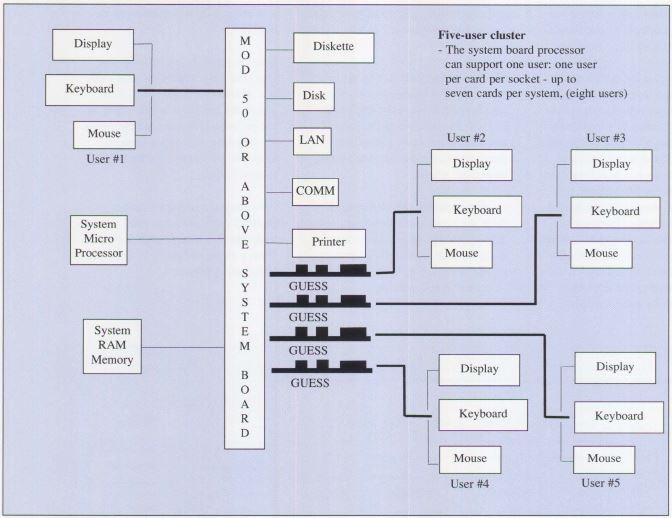
Figure 3. Cluster Host with Four GUESS cards
Because the cards are bus masters, and because the Micro Channel defines
public memory on the bus or peripheral, each GUESS card can read from or write
to memory located in the system or on other cards, even on other GUESS cards.
The last property is called peer-to-peer bus master operation on the Micro
Channel.
The concept could be made to work in a limited way for AT-based systems
without peer-to-peer bus master communication. In such a system, a common
system resource is assigned all data transfer responsibility, and the number of
peripherally attached users becomes limited by the performance of that element.
The central system resource is often the processor, and it already has enough
to do. Dependence on a central resource is "designed-in" obsolescence, as the
performance and number of users is limited by the collective load on the
central resource, which is fixed in capacity at time of purchase.
The cluster host LAN does not have this defect. The GUESS card need only
support its own data transfer requirements.As each GUESS card is added, the
processor power to support its user is added to the system, and the
connectivity to communicate is added as well. Micro Channel architecture and
GUESS work together to maintain the user's asset in system unit and
peripherals.
In theory, an operating system could be defined to coordinate access to
common system elements, such as disk, printer, communication connectivity, and
even bridge to external LAN. Such an operating system is a monumental task if
taken as an isolated effort. Fortunately, there is an existing foundation to
build on. Because Micro Channel multimaster arbitration uniquely grants the bus
to one owner at a time, and because that owner is "publicly" declared on the
arbitration bus, and again because of the public addressing of I/O, the Micro
Channel interface can emulate a token ring LAN where the bus grant is the
"token" and the bus address is the client or server address.
Further, peer-to-peer communication is a principal advantage of token ring
over host connectivity because only one block transfer on the bus is required
per message. Peer-to-peer communication and coordination of multiple processors
and subsystems is the domain of a control block architecture, such as Micro
Channel's Subsystem Control Block (SCB) architecture. Provision for resource
allocation, error detection and recovery, and diagnostic isolation of the
processors is the domain of Micro Channel Program Option Select (POS), Parity,
and Channel Check protocols. Net: This concept "needs" PS/2's Micro Channel
architecture.
The cluster host-attached peripherals, disk, diskette, LAN bridge,
connectivity, and print adapters are then "served" to the GUESS card's attached
users by modifications of standard local-area-network control programs. The
cluster host "sees" each GUESS card as a user on a network, and each GUESS card
"sees" the cluster host as the server. GUESS cards relate to each other as peer
clients in the network. The resulting system is not diskless, because a portion
of the system disk can be allocated to each user; however, the user interface
is disketteless. The placement of the disk and diskette at a point physically
removed from the user has security and environmental advantages and is actually
desirable in many applications.
The utilization of the peripherals is no higher than that of a small LAN of
eight users or less. The bus traffic may be reduced over a comparable LAN as
the cards could use one transfer to communicate peer-to-peer with
SCB-designated peripherals. A conventional server system would need at least
two, and perhaps four, transfers with system memory and the microprocessor in
order to move the same data. The network control program is helped by the SCB
architecture by delegating part of its function out to the cards.
The Micro Channel interface has a default burst data transfer rate of 20
million bytes per second. As a local area network serial interface, that is
equivalent to 160 megabits per second or 10 times present token ring network
speeds. Net: Actual performance should exceed that of a comparable small
LAN.
Consider the impact on the user and system owner of such a configuration. In
a conventional LAN topology, as in Figure 4, the server and clients each have
many duplicated functions. Many of these functions do not contribute to data
movement or, like the diskette or client LAN card, have very low utilization in
normal operation.
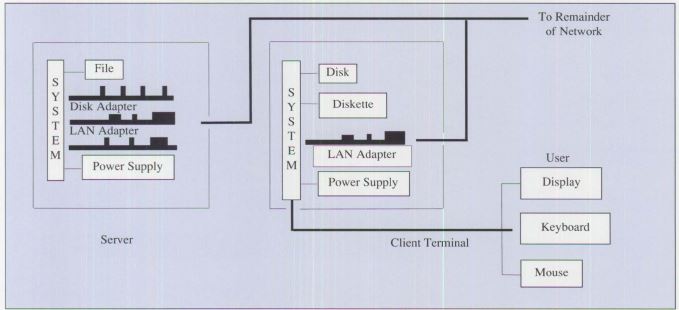
Figure 4. Conventional LAN Topology
In a cluster of GUESS cards, each user is supported by a card rather than a
system unit. In effect, the card plugs into a server, as in Figure 5.
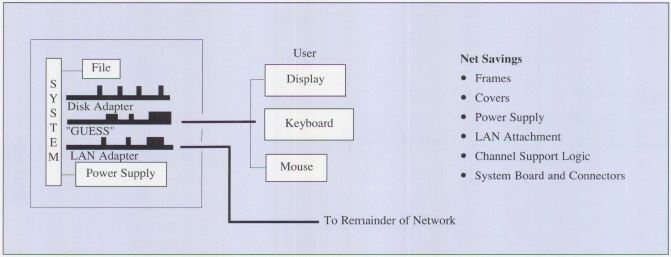
Figure 5. Cluster Host LAN Topology
Because all of the basic I/O functions are provided by the "cluster host"
system, the user has the basic function of the desktop system less the cost of
frames, covers, local disk and diskette, local area network card, and much of
the system board logic required to build a conventional system. These elements
can be a majority of the cost in a system. Net: The per-user cost of attachment
should be less than a comparable conventional LAN design.
Furthermore, because the GUESS connected users share the system peripherals,
the cost of those peripherals is "amortized" over all the users, and the cost
of the system is thereby reduced additionally. Therefore, a centralized SCSI
file system can outperform the lower-cost file systems of small desktop
systems, yet the cost per user "seat" in the system is less than eight such
small disk systems.
An optical "FDDI" LAN, as in Figure 6, may be prohibitively expensive if
connected to each client in a conventional LAN topology. It would cost as
little as one seventh as much per user if added as part of the cluster host
system. A similar scenario exists for the incorporation of a centralized
numeric processor, like IBM's i860-based Wizard
card in the cluster host.
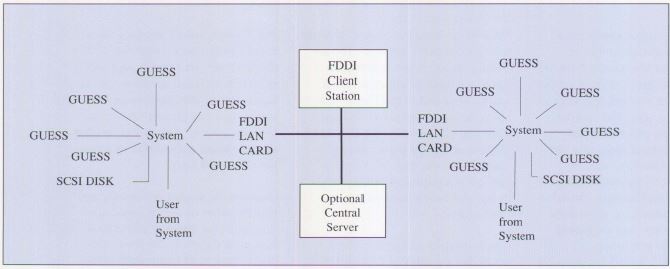
Figure 6. Fourteen-User System with FDDI LAN and Dual SCSI File Systems
The concept is flexible. It is believed that the GUESS card can emulate an
"X-Window" with a real processor instead of a virtual one. The real processor
stores applications in slower, less expensive RAM on the GUESS card, rather
than the high-speed RAM of the central AIX system. In the configuration shown
at COMDEX, a 7437 small, 370-based Micro Channel product ran VM (SP5). It
provided PROFS mainframe host 3279-like attachment across the Micro Channel via
a "virtual" 3274 control unit emulated in software, with virtual TCA and DCA
cards as mailbox windows in the system RAM of a cluster host PS/2 Model 80. The
interface to users was the familiar "hot key" between host VM applications and
DOS on the GUESS card. No external dependency on a mainframe was required for
basic operation (however, such connectivity was not designed out, either). Net:
The per-user cost of entire systems may be further reduced over a conventional
LAN or host attachment configurations.
The client's power supply, LAN attach card, LAN wiring, the multiplexing
address units of conventional LANs, and the mechanical disk and diskette
systems are major contributors to the failure rate of LAN-connected personal
computers of any bus design. The elimination of these elements from the GUESS
card improves the reliability of the user interface several fold. The
availability of each server to the conventional network is dependent on the
server's power supply and file system. The same is true for the cluster host
design. An uninterruptible power supply will protect the server in a
conventional LAN; with cluster host, it protects the clustered clients as well.
Because the clients draw the power of a card rather than that of a system, up
to 90 percent of the electric power per client can be conserved. It is
therefore economical to provide such protection. Net: The reliability of a
cluster host-based LAN can, in theory, exceed that of a conventional LAN
topology.
In a conventional LAN, a client can be brought off-line for service without
interrupting the availability of the system to other clients. One shortcoming
of the cluster host LAN is that the entire cluster must be powered down to
service a GUESS card, interrupting a system in continuous operation. Modern
component reliability can reduce the probability of such an interruption of
availability to a rare occurrence. This loss of availability during service
operations is not a concern when service can be scheduled for idle periods.
Inoperative stations can be cycled off-line by POS while awaiting service.
The potential exists for the GUESS card to assume the system's duties and
control peripheral adapters and memory much as the system would, albeit at
degraded performance levels, because the GUESS card is a master and a system on
the bus as well. Such operation could conceivably be invoked manually or
perhaps with very complex software automatically. Net: Availability can be made
equivalent to conventional LANs in most scenarios.
Another consideration with the cluster host LAN is the cost of wiring. Where
a facility has been wired for token ring, that wiring can be used to
interconnect clusters rather than individual users in the conventional LAN.
This provides up to an eight-to-one cost effectiveness for existing wiring with
the cluster host LAN. Due to the limitation in cable length from the cluster
host, if users are spaced at a distance greater than a few hundred feet from
the cluster, it may be advantageous to bridge to token ring for that set of
users. Where users are clustered in close proximity, like in many service
industries, the cluster host LAN topology is advantageous. One hybrid
configuration is achieved when a desktop system is shared between two adjacent
workspaces, as in Figure 7.
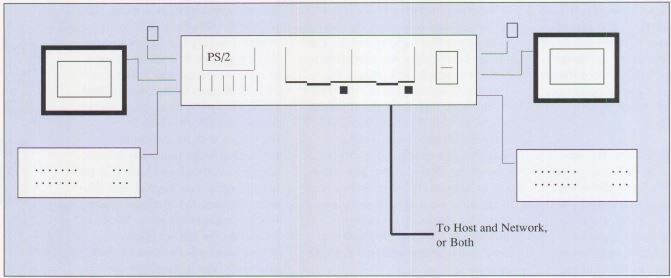
Figure 7. Hybrid Two-User System
The system, with diskette and peripheral devices, is at the left hand of one
user and the right hand of another. The same hybrid might appear as a two-user
transportable system with a GUESS card installed in a
P70 system.
Potentially, bridging to conventional LAN has other advantages. Only the
transfers that "escape" the cluster appear on the LAN. Local departmental
traffic need not occupy or burden the network. Only one token ring address may
need to be consumed per cluster, potentially raising the total number of
stations on the LAN to 1024, rather than the normal limit of 256. When systems
initially load programs to the diskless stations on power-up, the cluster host
LAN can transfer a full 16-megabyte system memory load theoretically in a
fraction of the time of conventional token ring LAN.
The concept is highly dependent upon characteristics of the Micro Channel
interface. Fully 85 percent of the system can be purchased today in the form of
high-end PS/2 systems, with the advantages of the approach being derived from
the dual use of the Micro Channel interface as an ultra-high-speed data
transmission path, as well as the peripheral attachment means. Yet, much work
lies between concept and reality with this new approach to workgroup systems.
New LAN control programs, new hardware packaging, BIOS, diagnostics and Power
On Self-Test procedures must be designed. New means of bridging to conventional
LANs must be defined. It is even possible that an insurmountable obstacle may
be discovered that prevents implementation of the concept altogether. Yet with
IBM's open disclosure of the concept to the industry, there will be many who
are attracted to the challenge.
Where the conventional LAN is still implemented with stand-alone system
designs, the external connectivity adds to both the cost and failure rate of
the system. The serial LAN data throughput acts as a limiter to performance of
the distributed intelligence.
Alternately, the integration of the workgroup computer designs out the
limitations of conventional LANs, and does for the group what the PC did for
individuals: it gives them autonomy. The next logical step is the integrated
workgroup computer, where "the network is the Micro Channel."
About The Author
Chet Heath is a Senior Member of Technical Staff at IBM's Entry Systems
Laboratory in his 21st year with IBM. He holds B.S. and M.S. degrees in
electrical engineering. Chet was lead engineer for the definition of Micro
Channel architecture and gave the architecture its name. He has published many
articles explaining architecture and workgroup computing in technical journals
and the trade press. He has received IBM Quality and Author awards.
He has earned IBM's eighth-level invention award, Outstanding Technical
Achievement, Outstanding Innovation, and Corporate Technical Achievement awards
for his work on Micro Channel architecture and other inventions.
The Micro Channel Architecture Handbook was written to accommodate the needs
of both beginning and advanced users. It is a guide to the Micro Channel, from
the basic overview to a detailed look at every discrete function found in IBM
PS/2 Model 50 through the new RISC System/6000 workstations, and beyond. It
includes ideas and insights for system design applications. The introduction
was written by Dr. Robert L. Carberry, IBM Vice President.
The Micro Channel Architecture Handbook, written and copyrighted by Chet
Heath and Winn L. Rosch, is published by Brady Division of Simon &
Schuster, Inc. The ISBN number is 0-13-583493-7.
OmniCluster
GUESS (Generic User Environment of a Small System) was Chet Heath's idea for
a cluster computer built from multiple peer-to-peer busmaster MCA adapters.
Each card was essentially a single-board computer with its own CPU, memory, and
user I/O.
IBM wasn't interested in making an actual product out of it. When Chet left
IBM in 2000 he took the idea with him (with IBM's blessing) and founded
OmniCluster - read HERE.
The product they shipped was for the PCI bus, but the idea remained the
same...
Editor's Note
I was forced off the internet for three weeks, and only had the MCAH,
MCA-Revolution, Model 80 Tech Ref (-041/-071) and a few sections from the '90
HITR. The moment of revelation is Chet Heath referring to MCA as an Expansion
Bus, one where individual busmasters could operate, communicating with each
other and the system CPU if they needed to.
The significant part was if they needed to. There
is nothing in MCA saying the "associate processor" has to use
any specific system resource.
I see now that the AOX MicroMaster 486
with the video port was edging towards this. It was never to be since AOX sold
the MicroMaster to Kingston.
Today's System on a Chip (SoC) have CPU, ethernet, video, HD/memory
controller, and USB integrated into a chip. Why not a Single Board Computer
(SBC) to fit a 32-bit MCA slot? Imagine a Win7 compatible MCA SBC. All the
cries of disbelief... Think of the ROMP Crossbow. The 68K YARC. The i860
Wizard. The whatever P/390... Just a few of the MAD ideas in my head. -LFO
|